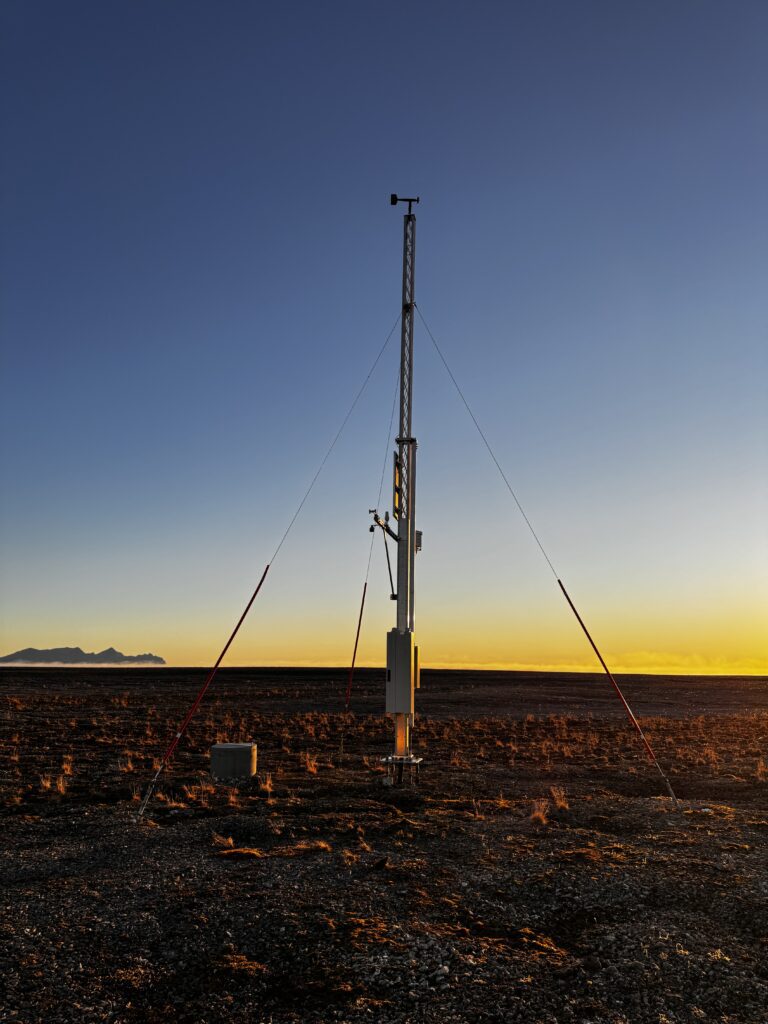The Bayelva permafrost site. Picture by Jennika Hammar.
New sites in Ny-Ålesund Integrated CryoNet Cluster
Two permafrost monitoring sites at 79 degrees north in Svalbard – Kvadehuken and Bayelva – are now officially accepted as part of the Ny-Ålesund Integrated CryoNet Cluster within the Global Cryosphere Watch. These sites have data available in near-real time (at cryo.met.no and frost.met.no) and provide long-term permafrost observations, contributing to international research efforts on Arctic climate and environmental change.
The Kvadehuken site, located on the Brøgger peninsula outside Ny-Ålesund in western Svalbard, is owned by the Norwegian Meteorological Institute (MET Norway) and operated in co-operation with the Norwegian Polar Institute. The station features a 31m deep instrumented permafrost borehole. An official weather station is also present at this site, measuring air temperature, relative humidity, wind speed and direction, radiation fluxes, snow depth, as well as soil variables, including undisturbed near-surface soil temperature and soil volumetric water content. Kvadehuken is part of the Climate-ecological Observatory for Arctic Tundra (COAT, https://www.coat.no/en/) project.
The Bayelva Site near Ny-Ålesund has been monitored by the Alfred Wegener Institute, Helmholtz Center for Polar and Marine Research (AWI) since 1998 and records extensive soil, permafrost and meteorological variables, such as active layer and permafrost temperature, soil volumetric water content, snow depth, liquid precipitation, air temperature, relative humidity, wind speed and direction and radiation fluxes. This cluster allows for comprehensive monitoring and modelling, enhancing understanding of cryosphere and climate dynamics in the High Arctic and suitable for improving Earth System Models. The cluster is coordinated by MET Norway and a collaborative effort between MET Norway and AWI.
Please feel free to reach out to Dr. Ketil Isaksen (ketil.isaksen@met.no) or Prof. Dr. Julia Boike (Julia.Boike@awi.de) if you have any questions or require further details.


Did you find what you were looking for?